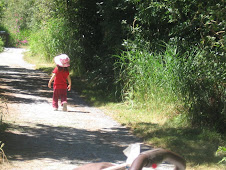At-risk youth are those who engage in sexual behavior and drug and alcohol use. But is at-risk behavior because of these problems or does it have more to do with the family structure and dynamics rather than the fact of being raised in a single parent home?
Dysfunction can be found in single parent families as well as blended families and original two-parent families. Poor parenting is not limited to single parents. According to studies, there is no doubt that family dysfunction creates a risk for juvenile delinquency. But it goes even deeper than that. Risk factors can be also based on individual characteristics of the child such as their personality and temperament, their peers and the community.
When considering family dysfunction, parental alcohol and drug abuse, anti-social parents, family conflicts, poor parenting practices, verbal, emotional or sexual abuse, low income levels, poor neighborhoods, crime in the area, the presence of youth gangs and mental health issues are all problems contributing to high risk youth.
Poor parenting includes lack of supervision, over permissiveness, inconsistent discipline, no clear limits, parent-child conflict, parents involved in criminal activities, excessive punishment and little interest or affection shown to the child. All of these can result in hyperactivity, aggressiveness and poor academic performance in young children with more serious consequences as they get older. Sixty-three percent of boys with a father involved in criminal activity are at-risk. Those who have witnessed violence in the home are 2.2 times more likely to be aggressive and at-risk.
According to some studies, it is believed that children of single parents are only considered to be more at-risk because of the potential for financial vulnerability, the chances of possibly living in a poorer neighborhood and perhaps having less supervision. But the connection seems to be almost non-existent where serious offenses are concerned only being somewhat stronger regarding classroom discipline and other behavioral problems.
There are ways, however, of mitigating these risks to youth whether they come from single parent families, blended families or two-parent families. They include having involved and supportive parents, harmonious family relationships, parents who practice appropriate parenting, those that give adequate supervision, sufficient affection, where the family is involved in extracurricular and school activities and when respect is shown to others by their parents. Other factors include the level of parental education and community relationships as a family. Single parent families with the above protective factors are no more at-risk than other families.
According to the latest Census in Canada, for the first time married people are in the minority but the youth crime rate has gone down six percent from a decade earlier. Based on these statistics, I believe youth can be at-risk in any family that does not practice protective measures to keep their children safe.
Subscribe to:
Post Comments (Atom)





















































































No comments:
Post a Comment